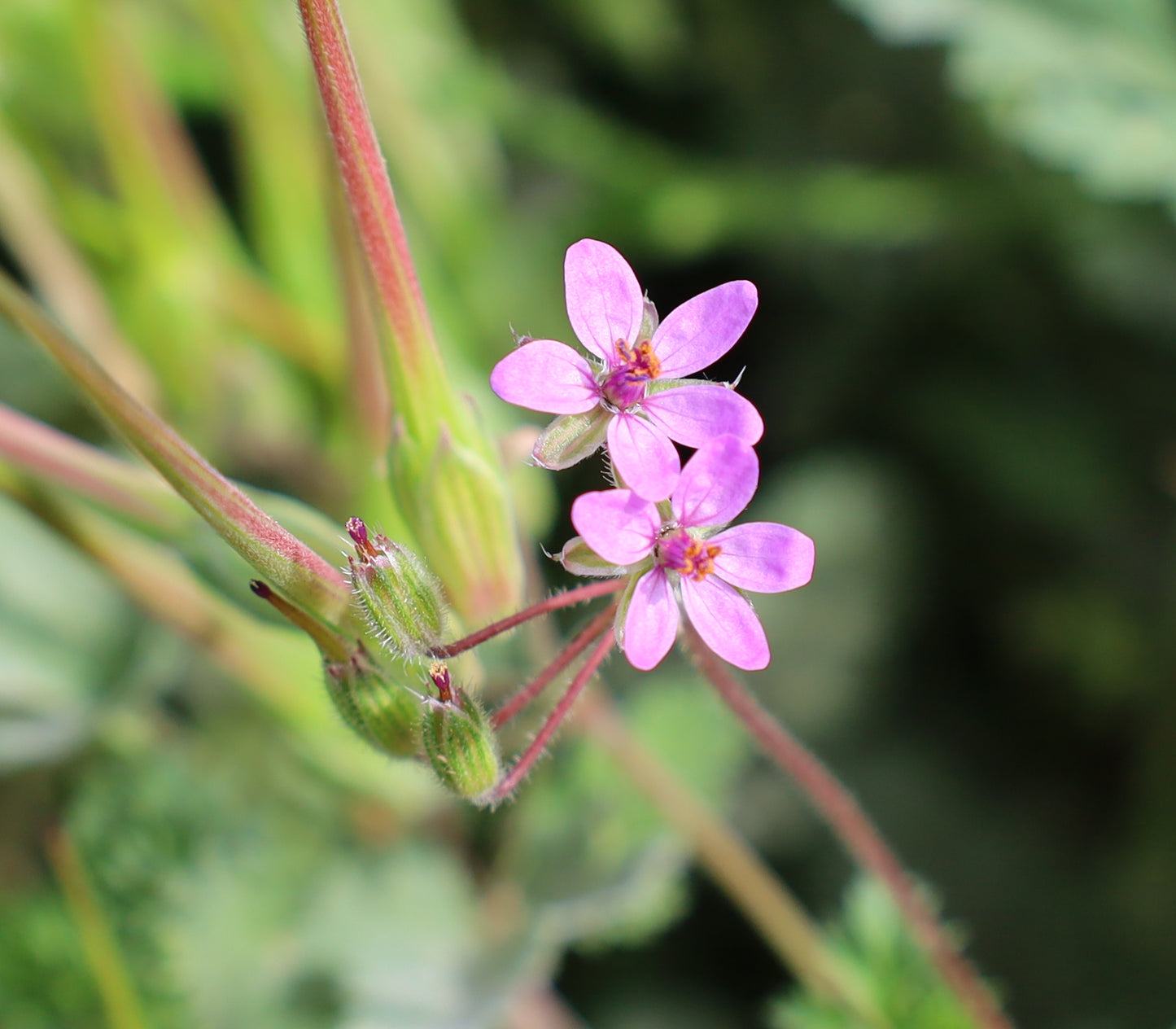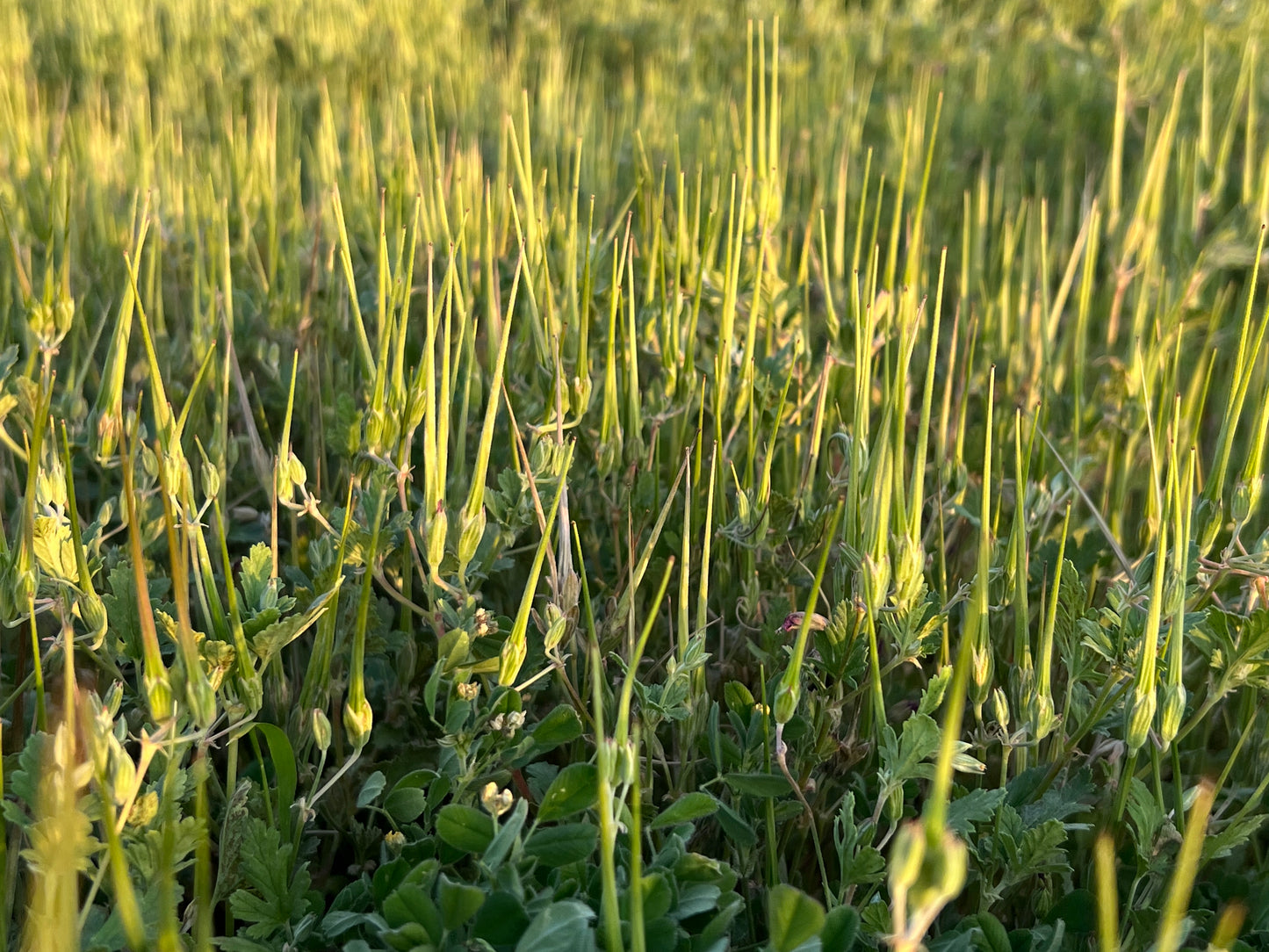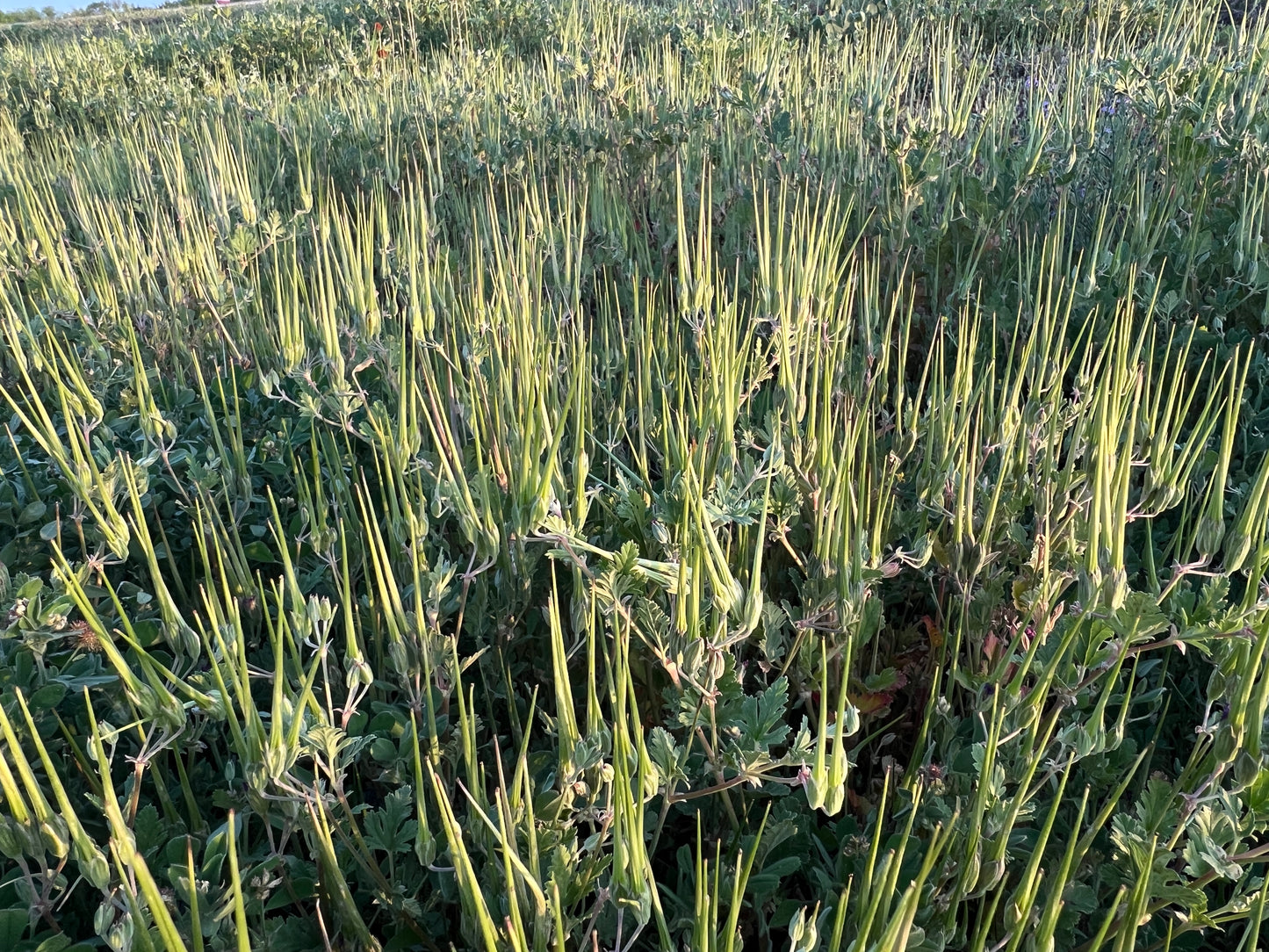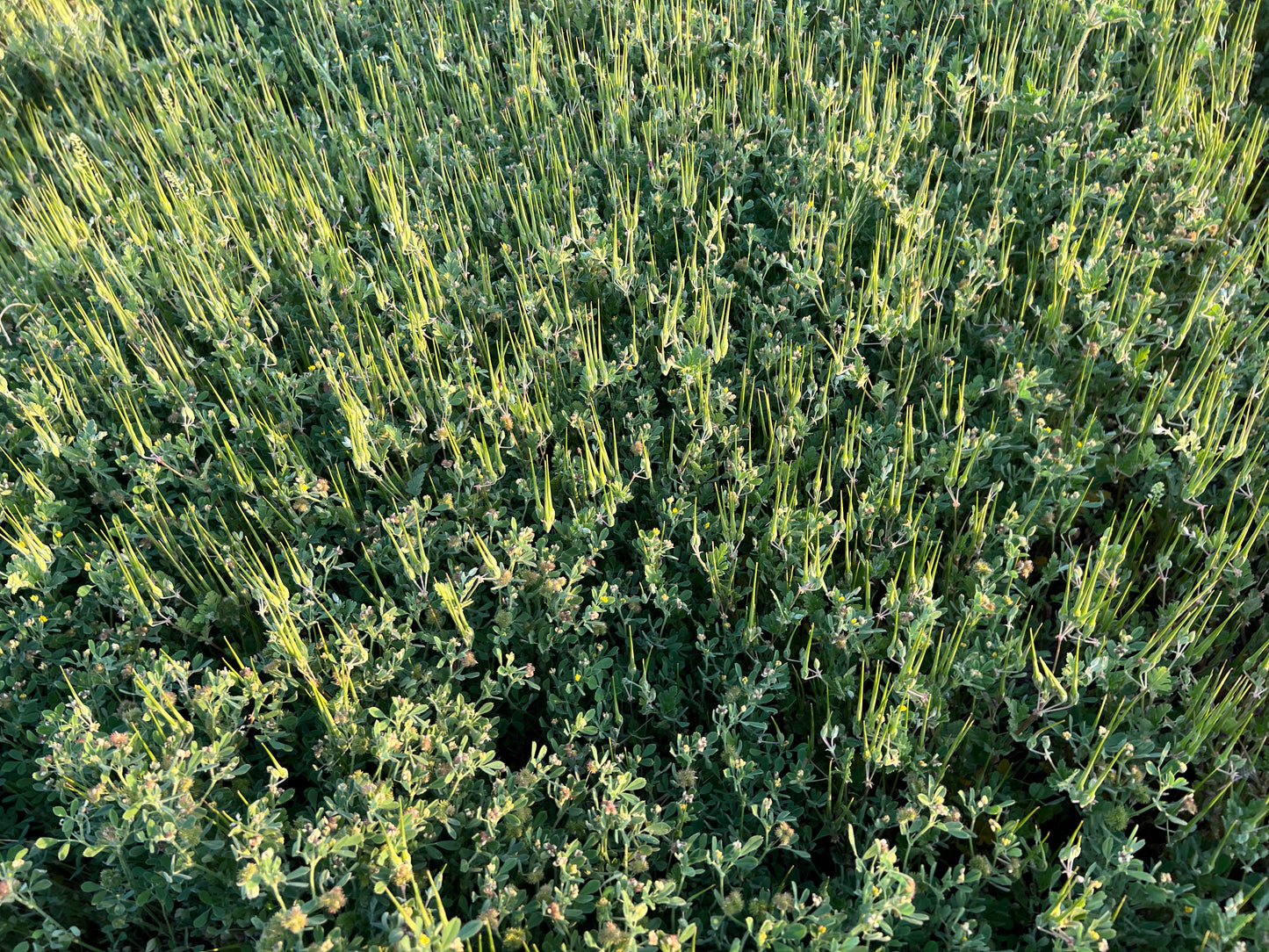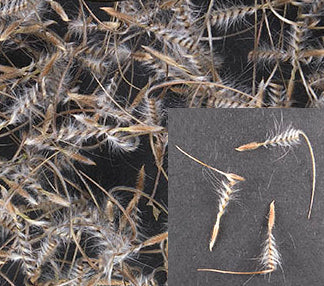Floridaseeds
Texas Stork’s Bill Texas Filaree 20 Seeds Erodium texanum USA Company
Texas Stork’s Bill Texas Filaree 20 Seeds Erodium texanum USA Company
Couldn't load pickup availability
Erodium texanum, commonly known as Texas stork's bill or Texas filaree, is a flowering plant species in the geranium family (Geraniaceae). Here is some information about this species:
Description
Growth Habit: Erodium texanum is a low-growing, annual herb.
Leaves: The leaves are typically pinnately divided and may have a slightly hairy texture.
Flowers: The flowers are small and usually pink or purple, with five petals. They often have distinctive dark markings or spots on the petals.
Fruit: The fruit is a schizocarp, which splits into several segments when mature, each containing a single seed. The seed dispersal mechanism resembles a bird's beak, giving rise to the common name "stork's bill."
Habitat
Range: Erodium texanum is native to the southwestern United States, particularly Texas, and northern Mexico.
Environment: It thrives in arid and semi-arid environments, often found in sandy or rocky soils, open areas, and disturbed sites.
Ecological Importance
Pollinators: Erodium texanum attracts a variety of pollinators, including bees and other insects.
Adaptations: The plant's seeds have a specialized mechanism for self-burial, aiding in successful germination. The awns of the seeds twist and turn with changes in humidity, driving the seeds into the soil.
Cultivation and Uses
Gardening: While not commonly cultivated in gardens, Erodium texanum can be grown in rock gardens or naturalized areas where conditions mimic its native habitat.
Forage: It may be utilized as forage by livestock in its native range, although its value varies depending on the abundance and local ecosystem.
Erodium species, including Erodium texanum, have a fascinating seed dispersal and self-planting mechanism that is often referred to as "self-planting." Here’s how it works:
Self-Planting Mechanism
Seed Structure: The seeds of Erodium plants have a specialized structure called a "mericarp." Each mericarp is equipped with a long, twisted awn (a hair-like or bristle-like appendage).
Hygroscopic Movement: The awns are hygroscopic, meaning they respond to moisture changes in the environment. When the awns are dry, they are tightly coiled. When exposed to moisture, they absorb water and uncoil.
Drilling Action: As the awns absorb moisture and straighten out, they twist and untwist in response to the alternating dry and wet conditions. This twisting action drives the pointed end of the seed into the soil. The motion is similar to a corkscrew, allowing the seed to "drill" itself into the ground.
Anchoring: Once the seed is sufficiently buried, it is less likely to be disturbed by wind or animals. This self-planting mechanism ensures that the seed is placed in a favorable position for germination when conditions are right.
Advantages
Efficient Germination: By planting itself, the seed can find a suitable microenvironment where it is more likely to germinate successfully.
Protection: Being buried reduces the risk of predation by animals and prevents the seed from being carried away by wind.
Adaptation to Arid Environments: This mechanism is particularly advantageous in arid and semi-arid environments, where the soil surface can be harsh and dry.
Observation
You can observe this mechanism by placing some Erodium seeds on a moist paper towel and watching the awns twist and turn as they absorb moisture. It’s a fascinating example of plant adaptation and a great way to understand how plants can evolve specialized strategies for survival and reproduction.
Growing Instructions for the Texas Stork’s Bill
1. Prepare a mixture of half potting soil and half sand, perlite or vermiculite. Water the mixture so that it is moist but not wet. 2. Put the seeds on the soil. 3. Cover the seeds with a thin layer of soil. 4. Water the seeds. 5. Place the pots in an area with warm temperatures in full sun or part shade. 6. When the seedlings are a few inches tall, they can be transplanted.
Materials
Materials
Shipping & Returns
Shipping & Returns
Dimensions
Dimensions
Care Instructions
Care Instructions
Share
